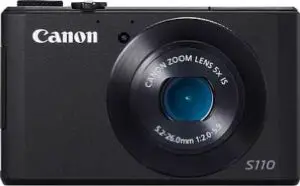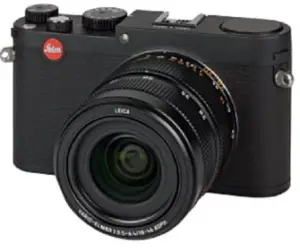Nikon D300 Or D3
D300 Or D3
Nikon D3 with full format and LiveView, D300 with 12 megapixels


In terms of functionality, the new Nikon flagship is a real winner with a new autofocus module, for example, whose 51 measuring fields comprise 15 highly sensitive cross sensors. With a speed of 9 frames per second in full resolution, the D3 succeeds both the sports and reportage camera D2H and the high-resolution D2X/D2Xs, ending the years of splitting the professional class into two models. With the D300, the D3 puts Nikon on the side of an alternative that has only been reduced by a few professional features. Nikon has also installed a CMOS sensor with around 12 million photocells in it, but this is still in the smaller DX format.
Without a doubt, the most important feature of the D3 is the full 35mm format of the CMOS image sensor, whose photocells are intended for the first time to provide two layers of microlenses for optimum use of the incident light even in the critical edge areas. Together with the column-wise amplification of the signals Nikon expects a sensationally good noise behaviour. Starting from a basic sensitivity according to ISO 200, the camera offers settings up to ISO 6,400, plus two gain modes up to dizzying ISO 25,600. The new EXPEED image processor has 12 channels available in parallel for fast readout of sensor data, which it then converts into RAW files with a maximum of 14 bits per color. A further EXPEED function is the integrated D-Lighting, which examines the image contrast depending on the location and is intended to display high-contrast motifs better by appropriate attenuation. Similar to Canon with PictureStyles, Nikon now also offers a summary of image parameters and tone value curves with the Picture Control System. The white dot on the front edge of the prism housing, characteristic of the D2 series, has disappeared. Below was the white balance sensor, which is now performed by the image sensor together with the exposure meter. As if borrowed from an aircraft cockpit, the fade-in artificial horizon appears, with the help of which the camera can be aligned horizontally.
The Multi-CAM 3500FX autofocus module has also made considerable progress. Of its 51 focus fields, the 15 centrally arranged ones are designed as cross sensors. However, the full format restricts the area of the measuring fields to the outside, so that the 51 AF points cover a smaller area than the 11 measuring points of the D2X/D2Xs. The autofocus is complemented by Scene Recognition, which allows the camera to hold the focus point during pans on the object initially targeted. While the edges of all focus fields were constantly visible on the D2X/H, the viewfinder image of the D3, which is magnified 0.7 times and covers 100 percent, only shows the red edges of the active focus fields mirrored by LEDs during the focusing process.




While in comparison to the D2X/D2Xs the D200 with 2 megapixels less resolution only lacked a few special features like the 100-percent viewfinder or the high-speed mode, the difference between the also newly introduced D300 and the D3 is inevitably somewhat larger due to the different sensor format. A 12-megapixel chip in CMOS design is now working in the D300, whose data can be converted into RAW files with a colour depth of 14 bits. Due to the smaller DX format, however, the choice of suitable lenses might be significantly different than with the full-format D3. In addition to the extremely high-resolution 3″ monitor with 920,000 pixels and the Live View mode, the EXPEED processor with its functions such as D-Lighting or Picture Control System has been adopted unchanged from the D3. As with the D300, the Multi-CAM 3500DX autofocus module can have 51 fields and scene recognition. For high-precision focusing even in poor lighting conditions, there are 15 cross sensors among the 51 AF fields, as with the D3 AF module. Compared to the top-of-the-range model, the D300 can stand out with its dust protection by ultrasonic excitation of the filter upstream of the sensor; one of the few features that the D3 lacks because of the possibly too massive construction of the sensor unit. Another practical advantage over the D3 is the LCD layer below the viewfinder prism, which can be used to display grid lines or the battery capacity indicator in the viewfinder. In contrast to the D200, the 0.94x magnifying viewfinder now covers 100 percent of the image field. Since the compact D300 does not have a built-in portrait handle, one is available as an option and comes with a second rocker switch. It also allows the camera to be operated with the high-performance batteries of the D2/D3 series or alternatively with mignon cells. When the MB-D10 battery handle is attached, the speed increases from 6 to 8 frames per second for continuous shooting. Such amounts of data can be stored in UDMA mode on corresponding CF cards, whereby in contrast to the D3 only one card slot is available. An HDMI output allows the output of images in HD format up to 1080i. Like the D200, the housing of the D300, which weighs around 900 grams and includes a rechargeable battery, is made of a magnesium alloy and is sealed against dust and splash water.
The new WT-4 wireless transmitter unit is compatible with both cameras and can also be used to remotely control the camera.
Image optimizations of the D2X/s for Nikon D3 and D300
The D2X/s Picture Control configurations can also be used as a basis for creating your own configurations. The configurations are operating system specific (Mac OS and Windows) and distinguish between the D3 and D300, so that a total of four downloads are offered in the support section of the Nikon homepage (see further links). These can be found under Firmware Updates, even if it is not a complete firmware update, but rather an extension.
Three color rendering modes of the D2X/s are simulated. D2XMode1 is an optimization for portrait shots, skin tones and tonal gradients are reproduced as lifelike as possible. Those who prefer the professional workflow will be best served with the D2XMode2, because this is the best way to process the images further. Landscape and nature photographers, on the other hand, will be impressed by the D2XMode3, which reproduces blue and green tones in a particularly powerful way.



